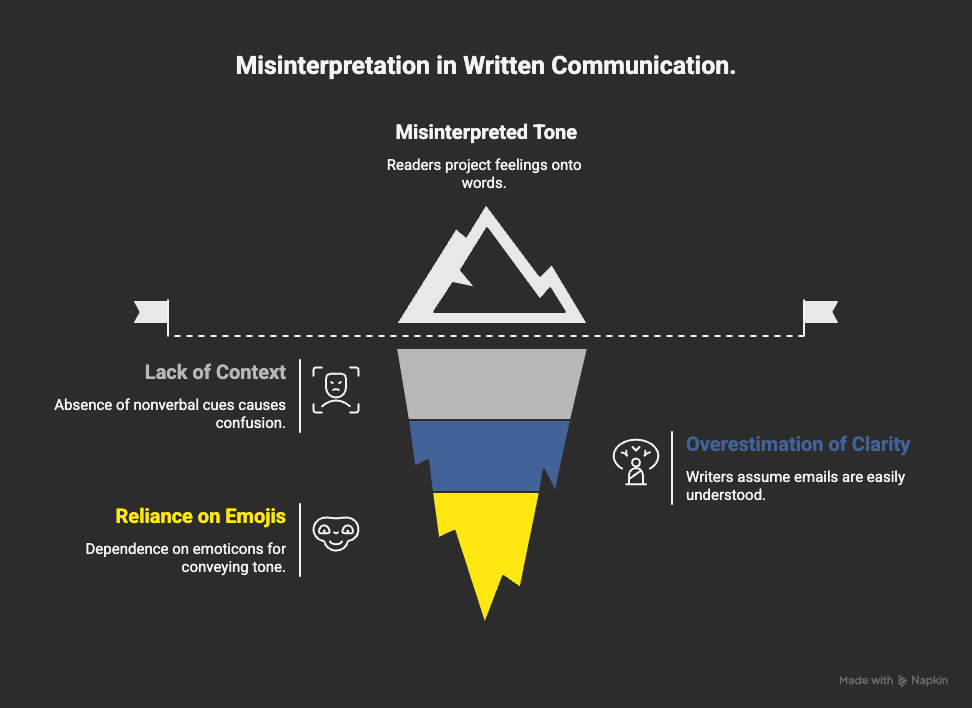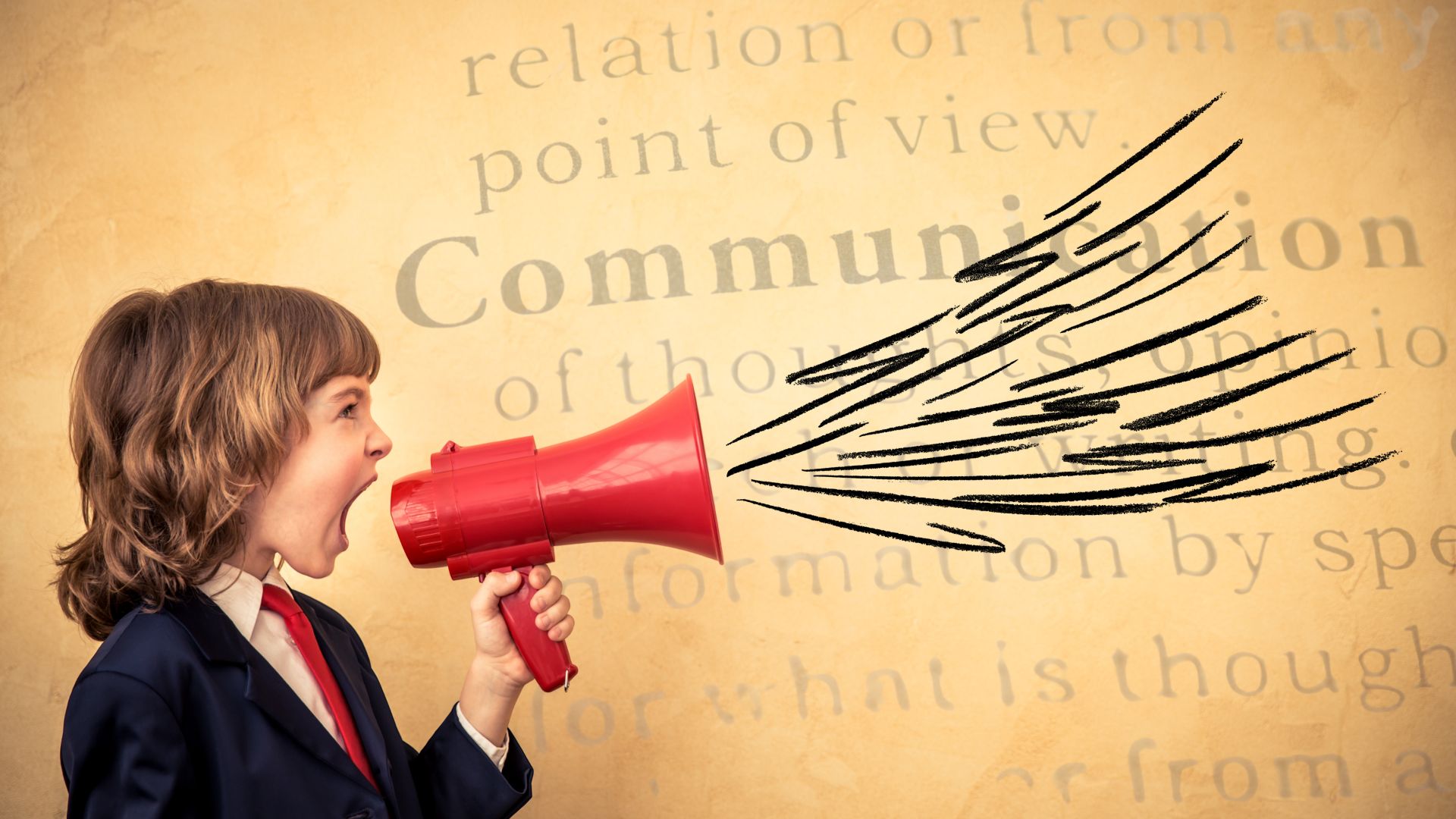Introduction:
Early in my career as a team lead, I made a near-fatal communication mistake. Instead of meeting with a key client face-to-face to discuss a sensitive issue, I fired off a lengthy email – and promptly watched as the misunderstanding snowballed. Tones were misread, feelings were hurt, and what could have been a quick conversation turned into a week-long crisis. That experience taught me a lesson I’ve carried ever since: how we communicate can matter just as much as what we communicate.
Communication is the lifeblood of business, connecting executives, teams, and clients. But in a world of overflowing inboxes, endless Zoom calls, and instant messages, many leaders still wonder: what is the most effective form of communication? Does one method truly outperform the others in conveying our message and achieving results? It turns out the stakes are high. Miscommunication isn’t just frustrating – it’s expensive, costing U.S. businesses an estimated $1.2 trillion annually (businesswire.com). No wonder nearly all business leaders (93%) say that effective communication is the backbone of their organization’s success (businesswire.com). In this post, we’ll explore the major forms of communication – verbal, non-verbal, written, and digital – to determine which is most effective for business professionals. Along the way, we’ll share research insights, examples, and a few personal stories to shed light on what truly works in a professional setting.
The High Stakes of Effective Communication in Business
Effective communication isn’t just a “nice-to-have” in business – it directly impacts productivity, trust, and the bottom line. A recent survey revealed that nearly three in four business leaders (72%) felt their teams struggled with communication in the past year (businesswire.com). Leaders estimate that nearly a full workday each week (about 7.5 hours) is wasted due to communication breakdowns (businesswire.com). Over the course of a year, that equals $12,506 in lost productivity per employee (businesswire.com) – which adds up to roughly $6.25 million annually for a 500-person company (businessofstory.com). Multiply those losses across the economy, and you see how we get to a $ 1.2 trillion annual cost of poor communication in the U.S. (businesswire.com).
The shift to hybrid and remote work has only raised the stakes. A wide majority of executives (82%) worry about effective communication with dispersed teams (businesswire.com). It’s easy to see why – miscommunications can slow down projects, hurt morale, and even sink deals. In fact, 86% of employees blame poor collaboration or communication for workplace failures (zipdo.co). On the flip side, when communication flows well, organizations see higher engagement and better results. Nearly all leaders (96%) agree that good communication is essential for delivering their team’s expected business results (businesswire.com). In short, how we communicate can make or break success in today’s workplace.
(Now let’s examine the different forms of communication and how each can be used most effectively.)
Verbal Communication: The Power of the Spoken Word
Have you ever resolved a tense email thread by picking up the phone and talking it out? I certainly have. Verbal communication – whether an in-person chat, phone call, or video conference – is often the fastest way to clear up confusion. There’s something powerful about the spoken word: tone of voice, pacing, and the immediate back-and-forth of dialogue add nuance that text alone often lacks. For example, if a colleague sounds hesitant on a call, you can notice it and ask a clarifying question in the moment. That kind of instant feedback loop is a huge advantage of verbal communication.
Among verbal methods, face-to-face conversation stands out as the richest and often most effective form. Speaking with someone in person combines voice with vital non-verbal cues (facial expressions, eye contact, body language) – creating a level of connection that’s hard to replicate in any other medium. It’s no surprise that research backs this up: one experiment found that face-to-face requests were 34 times more successful than email requests in getting a “yes” from strangers (linkedin.com). The researchers noted that seeing someone in person builds a level of trust and legitimacy that an email from an unknown sender just can’t match (linkedin.com).
Business leaders know the value of in-person communication. In one Forbes Insights survey, over eight in ten executives (84%) said they prefer meeting in person rather than via technology, and they overwhelmingly agreed it’s critical for building strong relationships with clients and partners (avnetwork.com). In fact, 91% of executives in the study believed face-to-face meetings are best for persuasion – far outpacing any virtual communication for important, complex discussions (avnetwork.com). It makes sense: when you’re negotiating a deal or leading a high-stakes meeting, being in the same room allows you to convey passion and read the other person’s reactions in real time.
Of course, verbal communication isn’t limited to the boardroom or conference table. A simple phone call can be incredibly effective, especially when distance or time constraints prevent meeting in person. Hearing someone’s voice fosters a personal connection – think of how a sincere tone can smooth over issues or how laughter can build rapport over the phone. Many of us (especially younger professionals) tend to shy away from phone calls – yes, plenty of millennials admit they don’t enjoy talking on the phone (linkedin.com) – but often a quick call beats an endless text exchange for resolving something urgent. I’ve learned that if an email thread goes past three replies without resolution, it’s probably time to talk.
Verbal communication does come with challenges. Not everyone is a confident speaker, and some conversations (like critical feedback) can be uncomfortable to initiate. It also requires both parties’ presence at the same time, which isn’t always practical across different time zones or busy schedules. Yet, despite these, the benefits usually win out for important matters. The clarity, warmth, and human element of a spoken conversation – whether in-person or via a phone/Zoom call – often make it the most effective way to communicate when it truly counts.
(Personal tip: If you’re discussing something sensitive or complex, default to a voice conversation. Even if it starts with an email, consider saying “let’s hop on a call” – you may be surprised how quickly you can straighten things out verbally.)
Non-Verbal Communication: The Unspoken Language
Words are only part of the story. Non-verbal communication – the messages we send through our body language, facial expressions, gestures, and tone of voice – often speaks louder than our words. I once sat in a client meeting where the client said everything was “fine” verbally, but his crossed arms and forced half-smile told a different story. Sensing his discomfort (even though he didn’t say it outright) prompted me to probe deeper, and sure enough, we uncovered some concerns that needed addressing. This is the power of paying attention to unspoken cues.
It’s commonly said that the majority of communication is non-verbal. While the exact percentages can vary by context, experts estimate that roughly 70% to 93% of communication’s impact comes from non-verbal elements (lifesize.com). Think about it: the same sentence can have a completely different meaning depending on the speaker’s tone and body language. A sarcastic smirk, a furrowed brow, or a joyful tone of voice all color the message far beyond the words themselves. We are wired to pick up these signals instinctively. When someone is fidgeting or avoiding eye contact, we sense something’s off, even if their words are polite.
In face-to-face settings, this “unspoken language” is on full display, which is a big reason in-person communication can be so effective. You can “read the room” and adjust your message on the fly. In the executive survey mentioned earlier, 77% of leaders said meeting in person allows them to better read the other person’s body language and gauge true meaning (avnetwork.com). Similarly, 85% said face-to-face helps build stronger, more meaningful business relationships (avnetwork.com) – those relationships are forged not just by what is said, but by the trust and empathy conveyed through eye contact, handshakes, and genuine smiles.
Non-verbal cues can reinforce your message – or contradict it. If a manager says “Great job on the report” but delivers it with a flat tone and no eye contact, the team might not feel very appreciated. Consistency between your words and your non-verbal signals is key to being believed. As a leader, I’ve learned to be mindful of my posture and expressions, especially when addressing my team. Even on days when I’m tired or stressed, I try to project positive energy with a smile and attentive eye contact when speaking to colleagues, so my tone matches the encouraging words I want to convey.
The flip side is that in many modern communication channels, these rich non-verbal signals get lost. An email or text carries none of the helpful facial expressions or vocal tone that we use to interpret meaning. Even a phone call strips away the visual cues. Video conferencing helps by restoring some eye contact and body language to the interaction – which is why turning on your camera in virtual meetings can make a big difference. (In fact, using high-quality video for important conversations helps ensure those non-verbal cues aren’t lost in translation (lifesize.com).) The bottom line is that the unspoken elements of communication are hugely important. Being aware of them – and, whenever possible, leveraging them by choosing a communication form that allows you to see and hear the other person – will make your communication far more effective.
Written Communication: Clarity, Convenience, and Challenges
In today’s business world, much of our communication happens in writing. Written communication includes everything from emails and text messages to memos, reports, and chat apps. There’s a reason we rely on the written word so heavily: it’s incredibly convenient. You can compose a message, send it to someone (or many people) instantly, and they can read it on their own schedule. A well-crafted email allows you to carefully choose your words – useful when delivering a precise update or a delicate message. It also creates a paper trail, which is great for documenting decisions or clarifying what was said.
Every day, I send and receive countless emails with my team and clients. Written channels are the backbone of asynchronous work, letting global teams communicate across different time zones. Surveys show employees now spend nearly half of their 40-hour workweek on writing – about 20 hours a week drafting emails, reports, and chat messages (businesswire.com). And many employees find it effective: about 80% of workers rate email as a useful, effective communication tool for their day-to-day work (zipdo.co). It makes sense – if you need to disseminate detailed information or standardized updates (say, quarterly results or meeting agendas), a written format is often the easiest way to ensure everyone gets the same message.
However, written communication comes with serious challenges. The biggest issue? Tone and intent can be easily misinterpreted. Without the smile, nod, or tone of voice to give context, readers might project their own feelings or assumptions onto your words. Have you ever received a brief reply like “Thanks.” or “Sure.” and wondered if the person was upset or being curt? I know I have, and it can create unnecessary anxiety. In fact, research confirms that we’re not as clear in writing as we think: people overestimate how well their emails are understood, when in reality about 50% of emails and texts are misinterpreted by recipients (stamfordadvocate.com). A short message intended as positive – like “nice job” – might be taken as sarcastic or snarky 60% of the time if no other cues are present (stamfordadvocate.com). Emojis, punctuation, and writing style help a bit (there’s a reason emojis have crept into workplace chats – sometimes you need that 🙂 to signal “I’m friendly!”). But in professional communication, we can’t always rely on a winky face to convey our tone.

Another challenge of written comms is information overload. The convenience of emailing everyone can lead to inboxes flooded with messages, where important details get lost. Many employees feel overwhelmed by the volume of email, and not everyone has the same habits of checking or responding promptly. As a manager, I’ve learned that sending a critical announcement solely by email might not be enough – I often follow up in person or with a quick call to key folks to make sure the message landed.
Miscommunications in writing can take a lot of effort to untangle. It’s telling that 75% of business leaders say they spend too much time resolving miscommunications in their teams (businesswire.com) – a good chunk of which stem from written exchanges that went awry. To mitigate these issues, it pays to double-check important messages: I now read important emails out loud to myself before sending, to see if any phrasing could be misunderstood or sound harsher than intended. I’ll even have a colleague review a sensitive note when possible. Taking a few extra minutes to make your writing clear and respectful can prevent days of back-and-forth confusion.
Despite its pitfalls, written communication is indispensable for its efficiency and record-keeping. The key is to know when to use it – and when a quick conversation might be better. A general rule I follow: if the matter involves emotions, complex explanations, or potential conflict, I try not to handle it solely over email. That’s when I pivot to a call or meeting, then perhaps send a follow-up summary in writing. Used in tandem with other forms, written communication can be extremely effective.
Digital Communication in the Modern Workplace
Technology has revolutionized how we communicate. Digital communication spans a mix of forms – it includes written mediums like email and instant messaging, but also voice and video carried over the internet. In a modern office, you’re likely toggling between Outlook, Slack, Zoom, Microsoft Teams, and maybe a project management chat all in the same day. These tools are powerful: they enable real-time collaboration across the globe and have kept teams connected through the disruptions of recent years. But they also come with their own set of pros and cons.
Consider the recent rise of remote and hybrid work. When my company went fully remote during 2020, suddenly everything was a digital interaction. Morning discussions moved to video calls; quick questions to a colleague became Slack messages instead of tapping them on the shoulder. One nice surprise was how much we could accomplish with these tools. In fact, a survey found 69% of employees working from home prefer using messaging apps as their main way to communicate with colleagues (blog.hubspot.com). It makes sense – chat platforms like Teams or Slack are great for quick check-ins and sharing links or files on the fly. They tend to feel less formal than email, which can encourage more frequent updates among team members.
However, digital channels require us to be extra mindful in how we use them. Many people noticed that some things got harder in an all-virtual environment. For example, 67% of employees said resolving conflicts with coworkers became more challenging when working remotely (blog.hubspot.com). It’s not hard to see why: when you can’t just walk over to someone’s desk to clear the air, issues might fester or conversations might be delayed. Virtual communication can also suffer from a lack of personal connection if we default to text-only modes. It’s easier to be blunt or brusque in a quick chat message than you would be face-to-face, and that can cause friction.
Another pitfall of the digital workplace is distraction and disengagement. How many times have we all been guilty of checking email or scrolling our phone during an online meeting? (I’ll admit, I’ve caught myself doing it too.) We’re not alone – in a survey of executives, 58% admitted that they often multitask (like reading emails or web browsing) during virtual meetings (avnetwork.com). That level of divided attention is far less common in in-person meetings, where everyone is around the same table and social pressure keeps us focused. This is a reminder that while virtual meetings are convenient, they require new norms and discipline to be as effective as their face-to-face counterparts.
On the positive side, digital communication tools have also created new ways to connect. Video conferencing deserves a special mention. High-quality video calls can be a lifesaver for remote teams – they restore some of the eye contact and body language that telephone or text can’t provide. By encouraging team members to turn on their cameras in important meetings, we’ve found we collaborate much more effectively. It aligns with research that suggests using video helps maintain those non-verbal context cues during critical conversations (lifesize.com). And while “Zoom fatigue” is real, I’ve had genuinely productive and warm virtual workshops with teams spread across multiple countries – something that would have been logistically difficult without digital tech.
Interestingly, being forced into digital communication can even improve certain interactions. One survey noted that 91% of employees felt a stronger connection to their manager after transitioning to remote work (blog.hubspot.com). Why? Possibly because managers had to check in more deliberately and communicate more frequently when they could no longer just pop by in person. In my case, moving to a hybrid model meant I started holding regular one-on-ones via video with each team member, whereas before those chats might have been ad-hoc. The result was more intentional communication, and in some ways our team grew closer despite the physical distance.
At the end of the day, “digital communication” isn’t one single form – it’s a blend of written and verbal techniques delivered via technology. The secret to effectiveness here is to leverage the strengths of these tools (speed, reach, convenience), while compensating for their weaknesses (lack of physical presence or easy distraction). For instance, if you’re brainstorming ideas, a live video call with an online whiteboard might beat a long email chain. If you’re sharing a document for feedback, a collaborative platform like Google Docs or Microsoft Teams can combine written notes with quick chat discussions. The companies that thrive in the digital workplace are those that create norms around when to use which tool – and encourage employees to occasionally pick up the phone or schedule a face-to-face meetup (even if virtual) when nuance or camaraderie is needed.
Context is King: Choosing the Right Communication Method
By now it’s clear that each form of communication has its own strengths. There really is no one-size-fits-all answer to which is “most effective” – it depends on your goal, audience, and situation. The best communicators are adept at picking the right medium for the message. To summarize how various communication forms stack up, consider the comparison below:
| Communication Method | Key Strengths | Potential Weaknesses | Best Suited For |
|---|---|---|---|
| Face-to-face (In person) | – Richest medium: includes tone, facial expressions, body language for full context – Immediate back-and-forth interaction builds trust and rapport – Easier to gauge understanding and adjust on the fly |
– Not always feasible (distance, travel, time constraints) – Can be more time-consuming and costly to arrange – Some people may feel anxious in high-stakes in-person discussions |
– High-stakes or sensitive conversations (e.g. negotiations, performance feedback) – Persuading or inspiring others – Building strong relationships and trust |
| Video Conferencing | – Provides visual and auditory cues, simulating in-person interaction – Connects distributed teams in real time – Convenient (no travel needed) while still somewhat personal |
– Technical issues or lag can disrupt flow – “Zoom fatigue” from excessive screen time – Slight loss of eye contact or body language subtleties vs. in-person |
– Team meetings for remote/hybrid teams – Sales calls or client meetings when in-person isn’t possible – Collaborative brainstorming with visuals/screenshare |
| Phone Call (Voice) | – Conveys tone of voice, emotion, and immediacy – More personal than text-based communication – No setup needed beyond dialing (good for urgent matters) |
– Lacks visual cues (no body language or facial feedback) – Easy for participants to get distracted when not face-to-face – Not ideal for lengthy or detailed discussions (no visual aids) |
– Quick clarifications or decision-making – Discussing sensitive topics when you can’t meet in person (better to hear voice than only text) – Initial introductions or networking conversations |
| Written (Email, Messaging) | – Asynchronous: recipients can read and respond on their own schedule – Allows careful editing of content for clarity – Creates a written record (documentation of decisions, announcements, etc.) |
– No tone of voice or facial cues -> higher risk of misinterpretation – Responses aren’t immediate (back-and-forth can be delayed) – Volume of messages can overwhelm and reduce effectiveness |
– Sharing information widely (announcements, updates to large groups) – Detailed instructions or data that people may need to reference later – Communicating across different time zones without requiring real-time meeting |
As the table above suggests, the “most effective” form of communication changes with the context. If you need to deliver bad news to an employee or have a delicate negotiation, nothing beats a private, face-to-face conversation (or at least a video call) for empathic, clear dialogue. Indeed, around 82% of employees expect important or complex news from management to be delivered in person rather than via a memo (zipdo.co). For routine status updates or quick questions, however, written channels like email or team chat might be perfectly sufficient – it’s no wonder we still see email as a workhorse for everyday communication, balancing efficiency with clarity. Meanwhile, some scenarios can benefit from a combination: you might present to a client in person to win their business, then follow up with a written proposal summarizing the details. Using multiple forms in tandem can reinforce your message and cater to different preferences (for example, delivering an oral presentation and providing a written handout covers both verbal learners and those who like to read information).
Knowing your audience and purpose is key. Are you trying to inspire and motivate? A live speech or face-to-face interaction will have more impact than an email. Sharing complex data? Perhaps send a detailed report (written) and then discuss it on a call to answer questions. Need quick alignment on a minor issue? A 5-minute phone call could save hours of back-and-forth texts. And let’s not forget personal style – some clients or colleagues respond best to a friendly chat, while others prefer everything in writing. Being attentive to these preferences can greatly improve your communication effectiveness.
In practice, mastering business communication means staying flexible and intentional. Don’t get stuck in an “email only” habit or avoidance of the phone – consider which form will convey your message most clearly and respectfully. One mentor gave me great advice: if it’s really important, communicate it in person (or voice), and follow up in writing. That way, you get the best of both worlds: the humanity of a conversation and the clarity of documentation.
Conclusion: Putting It All Together
So, what is the most effective form of communication? In the end, the answer boils down to choosing the right channel for the right moment. If forced to pick one, face-to-face communication emerges as uniquely powerful – it builds trust, minimizes misinterpretation, and can accomplish in minutes what might take days of emails. As we saw, in-person dialogue leverages tone and body language to maximize understanding (which is why it’s 34 times more persuasive than email in some cases (linkedin.com)!). However, the reality of modern business is that the best communication form is often a thoughtful mix. Great leaders and effective teams use a blend of methods: they present big ideas in person or on video, iron out details over email, brainstorm on collaborative chats, and listen carefully at every step.
The key takeaway for any professional is to be intentional about how you communicate. Next time you have an important message or a tricky situation, pause and think – would this be handled better with a face-to-face talk? A quick phone call? Or a well-structured email? Investing a moment to choose the most effective form can pay huge dividends in clarity and impact.
Effective communication is a skill that can always be improved. By understanding the strengths and weaknesses of each form, you can avoid common pitfalls (like tone-deaf emails or endless unproductive meetings). More importantly, you can ensure your message truly connects with your audience. And when that happens – when communication clicks – it’s incredibly rewarding. Teams become more aligned, customers feel valued, and work just… flows better.
I challenge you to put these insights into practice. This week, identify one important conversation or message and deliberately choose the optimal communication method for it – maybe that means scheduling an in-person chat instead of yet another email. See how it goes, and encourage your colleagues to do the same. You might be surprised at the positive results. Communication, after all, is at the heart of business success. By getting it right – by picking the right form at the right time – you set yourself and your organization up for smoother collaboration and better outcomes. Now, it’s your turn: how will you communicate your next big message?
Feel free to share your own experiences or tips in the comments. The best way to keep improving is to keep the conversation going – no matter what form it takes!





0 Comments